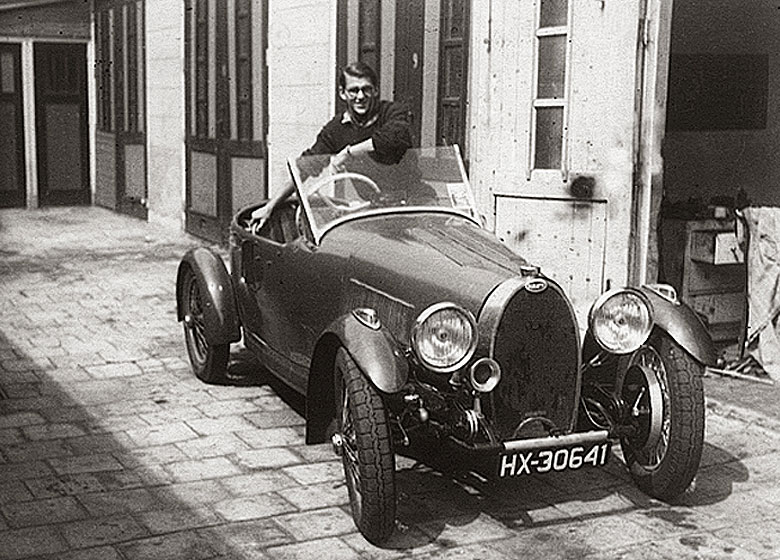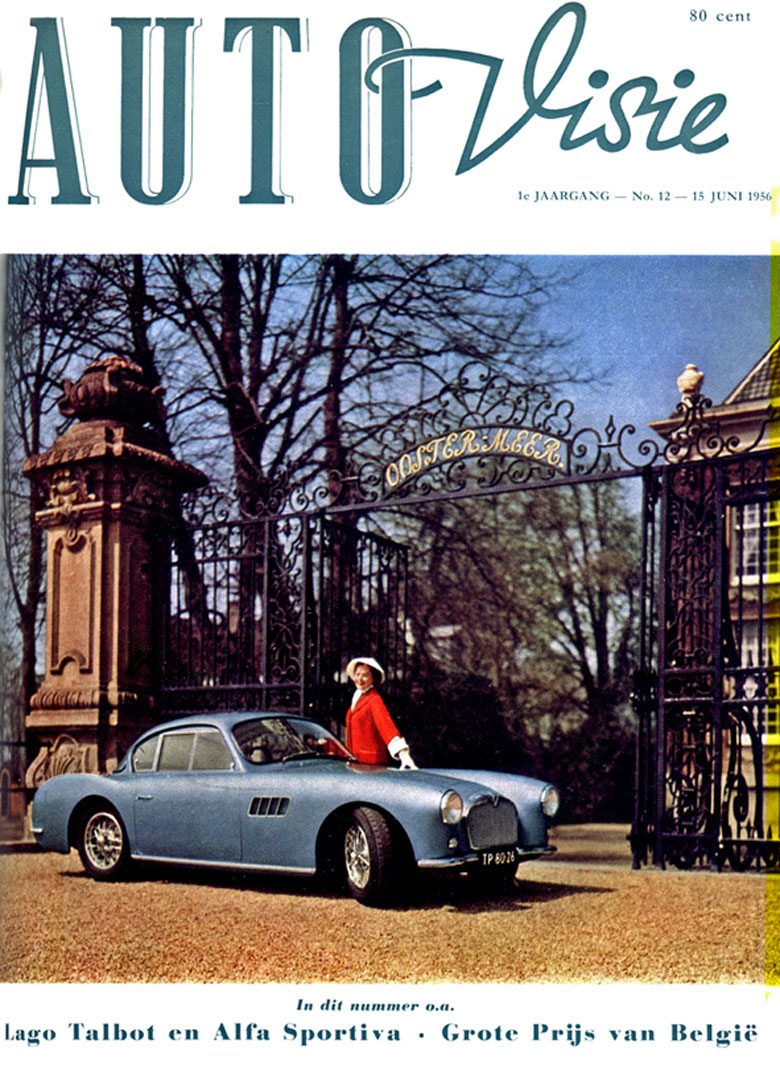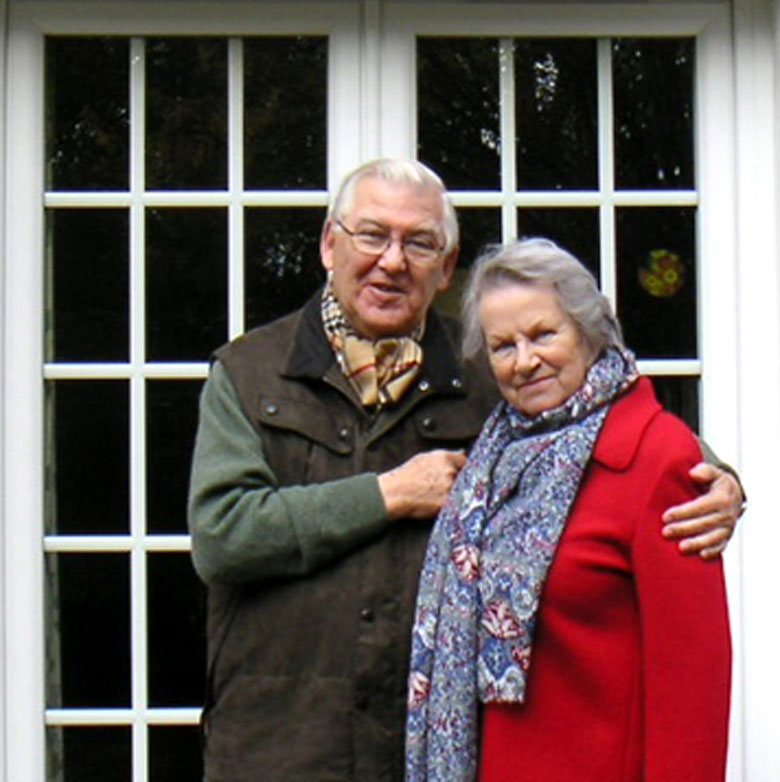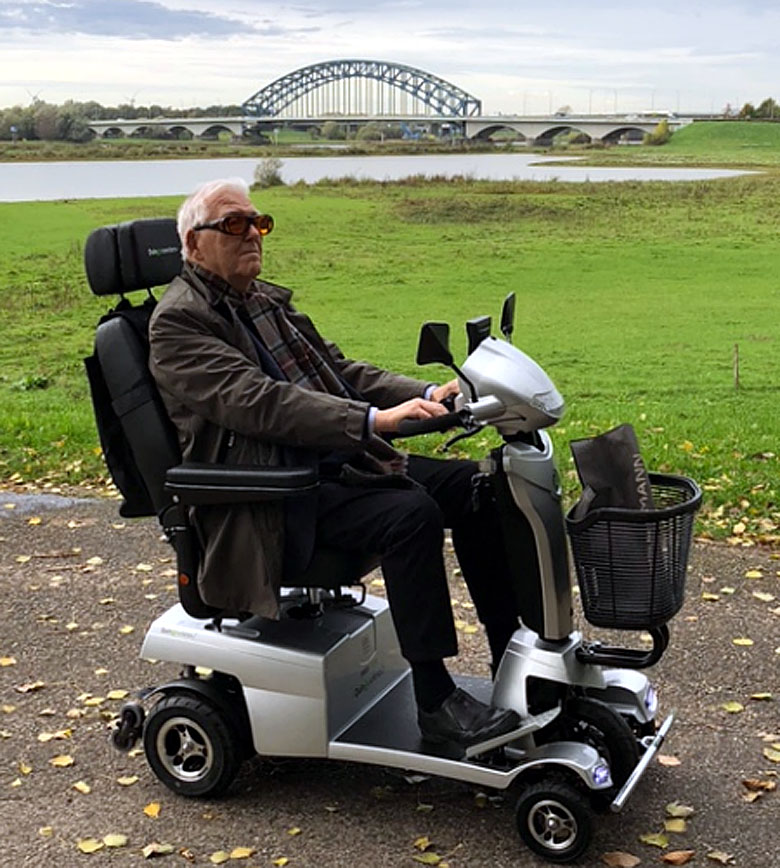Intro by the Editor
Gijsbert-Paul Berk once described for us his first adventure in mobility. “A Bugatti Type 40 was discovered by one of my friends in the port of Rotterdam, where it was used as a tractor. The car was in a sorry state and looked tatty and tired. I knew that it would need a complete restoration. But I was young and could do a lot of the work myself with the help of a few friends.” It served him well, providing him with a great deal of experience as well as a distinctive means of transportation.
Today, at 92, Gijsbert is still getting around, although no longer via Bugatti. He has something much more up to date.
Born in 1930 in Kampen, the Netherlands, Gijsbert-Paul Berk studied at the Institute for Automobile Management IVA, Driebergen. In the early 1950s, he worked as an apprentice for Maurice Gatsonides, then involved in building Gatso cars. He went to Paris to try his luck as a designer/draftsman for various coachbuilders, among them Saoutchik. He became involved in organizing rallies and the annual Grand Prix race on the Zandvoort circuit.
At that time he also started writing articles for De Auto. In 1955 he joined Fred van der Vlugt who had founded the magazine Autovisie as technical editor. From 1959 onward he worked as a freelance journalist, contributing amongst others to Car and Driver and Popular Mechanics. After his retirement he moved with his wife Barbara to the Oise department in France. There he started writing again and produced the authorized biography of André Lefebvre. In addition, in 2012, he began to submit articles to VeloceToday.
Gijsbert is still interested in automobiles. As he has always done, he continues to inspire, guide, write and keep up with in the latest automotive developments.
Last week he sent this letter about his latest adventure in mobility:
Dear Pete,
Recently I bought myself an EV (Electrical Vehicle). It is a single seater, but it does not in any way resemble the Red Bull ‘mono-posto’ Max Verstappen drove to become the Formula 1 World Champion for the second time.
And it is not a Tesla; nor a Renault Zoé or Nissan Leaf.
It is a Quingo!
Not to be confused with a Twingo, which was the small, frog-eyed Renault city cruiser Barbara and I had when we lived in France. The Quingo is a scootmobile. A sort of electrically powered office chair.
The reason that, after testing several other scootmobiles, I chose this model, is because it combines the maneuverability and short turning circle of a model with three wheels with the stability and safety of a four-wheeled vehicle.
The secret is that it has five wheels. Although technically it is in fact a three wheeler with two small auxiliary-wheels at the front. These touch the road only when the machine leans over too much in a fast corner or during a sudden steering correction when driving over uneven or rough road surfaces. Then these auxiliary-wheels prevent the Quingo from turning over, or capsizing as sailors would call it.
Driving a Quingo is childishly simple, but as an experienced car driver, one has to adapt to the fact that the foot-pedals are only dummies, They have no function. Everything has to be done with hands.
In the middle of the ‘kidney-shaped’ steering wheel are two small handles. The one at the right is for driving forwards, the one at the left for reversing. Squeezing a handle towards you increases the speed. A small rotary knob on the instrument panel, above the steering wheel, allows the driver to regulate the speed-range. The top speed of the Quingo is 13 Km/h. This means that every cyclist will overtake us without any effort. However when I turn the speed-range control knob completely to the left, pedestrians can easily keep up with my pace.
On the instrument panel, there are also a speed indicator plus a gauge giving the amount of ‘juice’ in the batteries. And there are push-button switches for the direction indicators, the lights and other functions. My Quingo is even equipped with a rear-view camera, to supplement the two rear-view mirrors.
According to the manufacturer, the two 24 Volt lead-acid batteries give a range of between 25 and 40 kms, depending on the use. Brisk accelerations or constantly driving at high speed will reduce the distance the machine will take you. The smoothness of the road surfaces (rolling resistance) and the outdoor temperature (batteries) will also influence the range. I generally drive around 30 kms (18 miles) before recharging the batteries. Charging may take up six to eight hours.
The main reason why I bought a scootmobile was to improve my mobility. Because of deteriorating eyesight caused by age-related macular degeneration, my driver’s license could not be renewed. So I am no longer allowed to drive an automobile. Public transport is fine for longer distances, but in my town is not available when I want to go shopping or visit local friends and acquaintances.
My Quingo is not the fastest or most elegant vehicle but it gets me where I want to go. In the background of the photo below is the bridge over the river IJssel between Hattem and Zwolle, the city where I now live.
I must admit that before taking the decision to acquire a scootmobile, I had to overcome a few prejudices, such as only centenarians or very old ladies drive such vehicles. The admission of becoming old and handicapped is of course rather unpleasant. Those YouTube films about Benidorm Bastards did not help either. Who wants to be associated with those misbehaving oldies? But today I experience more advantages than disadvantages. My Quingo is a great little machine that gives me freedom and improves my mobility.
Best regards,
Gijsbert-Paul Berk




there’s also a little tiny vehicle i encountered on the qe2 years ago–it’s called a travelscoot–i think! it’s only good on smooth surfaces, but it’s small enough to fold up to go into an overhead bin on a plane. the lady who had it had lung problems and said it was a fine little travel companion for indoor use and outside if it was smooth, of course. i forgot to ask her about its range
Very nice history, full of humour, and a great -previous- car nut. Thanks. Pierre.
The red ones go faster!
Not too far off headin’ to the dealer and givin’ one of these puppies a looksee myself. I like the “wheelie bars” for when you give this motor a little “tweak”.
Some of us can remember riding something similar as a child, everything old is eventually new again. My grandfathers moto was never stop doing what you enjoy ! When you do life stops unexpectedly. Wishing everyone a joyful New Year..Jack